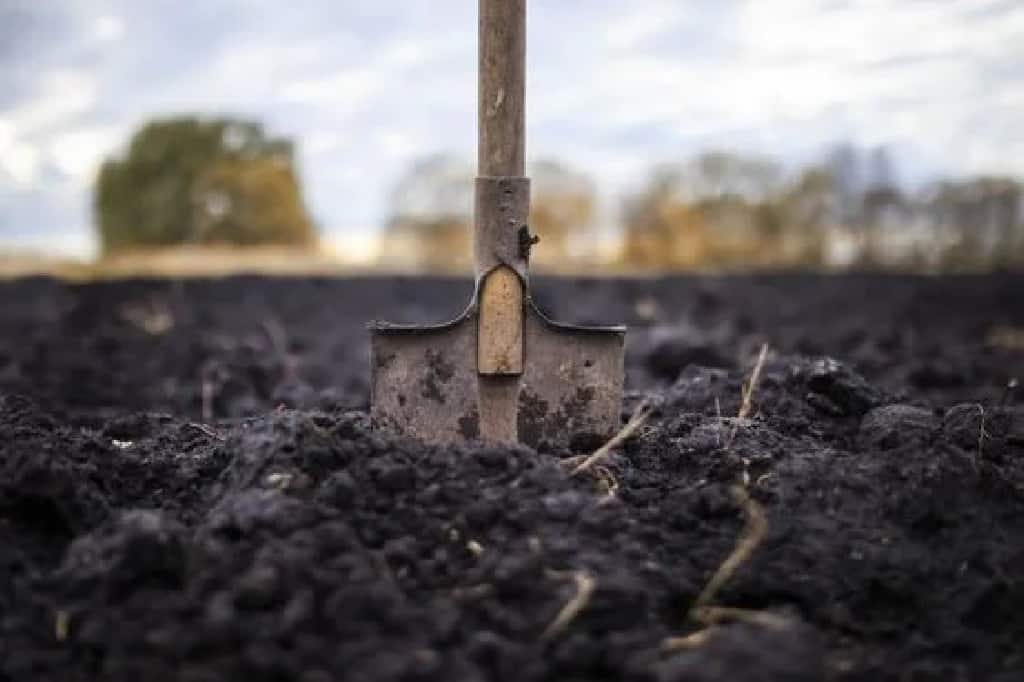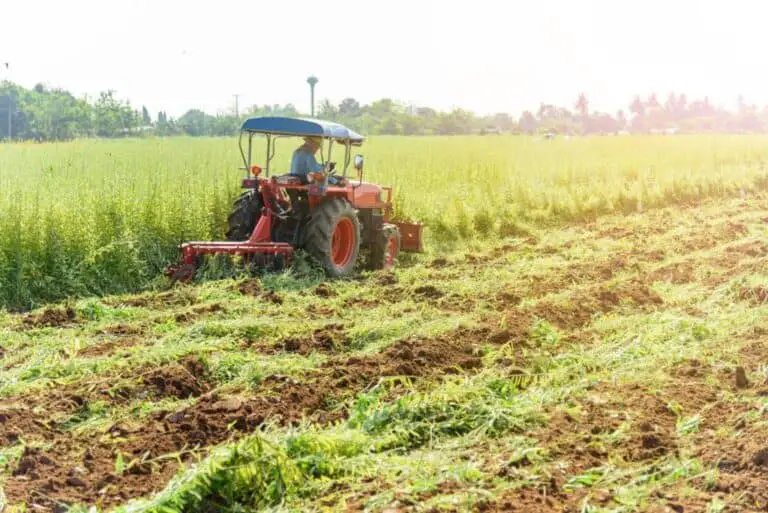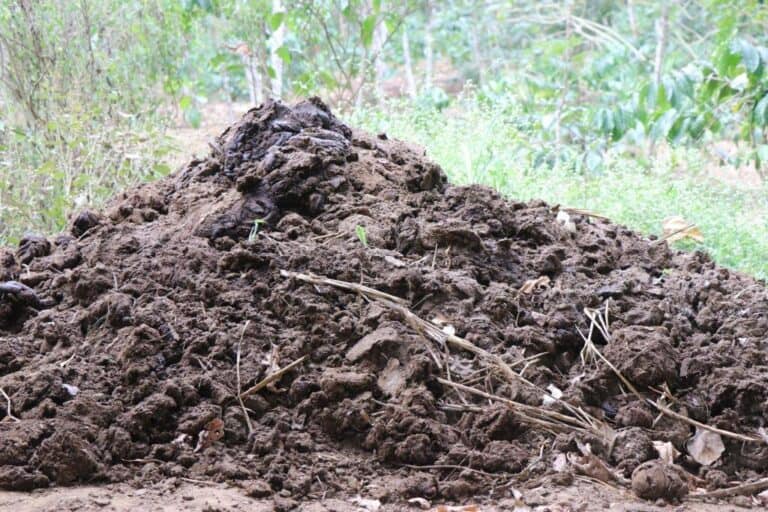How Does the Soil Stay Fertile on a Subsistence Farm? Natural Methods

Step into the idyllic world of subsistence farming, where fertile soil holds the key to a mesmerizing tale of abundance and sustainability. Picture yourself strolling through lush fields, a symphony of vibrant crops dancing in the gentle breeze. Have you ever wondered how this small patch of earth manages to yield such bountiful harvests year after year, providing just enough to sustain the farmer’s family?
Prepare to embark on a captivating journey beneath the surface as we unlock the secrets of soil fertility on a subsistence farm. It’s a story of nature’s delicate ballet, where nutrients pirouette and beneficial microorganisms perform unseen feats of heroism.
In this enchanting landscape, ancient practices like crop rotation and composting interweave with modern wisdom, showcasing the harmony between humans and the land they cultivate.
Join us as we peel back the layers of the earth and immerse ourselves in the fascinating world of soil stewardship, where every grain of dirt plays a vital role in nurturing life’s most basic necessity.
Introduction to Subsistence Farming and Soil Fertility
Subsistence farming, often practiced by small-scale farmers, is an age-old method of cultivating crops primarily for self-sufficiency. These hardworking farmers rely on the land to provide for their families, making soil fertility a vital aspect of their livelihoods. Unlike commercial farms that prioritize profit, subsistence farmers strive to maintain a fertile, sustainable environment for their crops, animals, and future generations.
The significance of soil fertility in subsistence farming cannot be overstated. Productive soil ensures bountiful harvests, a balanced diet, and a steady income for these farmers. Moreover, in regions where access to modern amenities is limited, fertile soil becomes a valuable and irreplaceable asset.
Despite its advantages, subsistence farming faces several challenges in sustaining fertile soil. Factors like limited resources, unpredictable weather, and insufficient knowledge often put pressure on the soil’s health, making it essential for subsistence farmers to understand the factors affecting soil fertility and adopt appropriate techniques.
Factors Affecting Soil Fertility on Subsistence Farms

Natural Factors
The environment in which a subsistence farm is situated significantly impacts its soil fertility. Climate plays a pivotal role, as temperature and rainfall influence nutrient availability and decomposition rates. The topography, too, can affect soil erosion and water retention, which subsequently affect fertility. Additionally, the type of soil present on the farm, such as sandy, clayey, or loamy, influences its nutrient-holding capacity.
Human Factors
Farming practices adopted by subsistence farmers have a direct bearing on soil fertility. Repeatedly growing the same crop without rotation can deplete specific nutrients, leading to diminished yields over time. Proper crop selection and diversification play a key role in maintaining a balanced soil ecosystem. Additionally, land management practices, such as proper drainage and erosion control, are crucial for soil health.
Impact of External Factors
Pollution, deforestation, and climate change exert external pressures on subsistence farms, causing potential harm to soil fertility. Pollution from industrial activities or the improper use of chemical inputs can contaminate soil, affecting its natural nutrient balance.
Deforestation can disrupt local ecosystems and disturb soil habitats, while unpredictable climate changes pose challenges for farmers who must adapt their practices to shifting conditions.
Traditional Agricultural Techniques for Soil Fertility
Over generations, subsistence farmers have developed ingenious techniques to enrich their soil without depleting it.
1. Crop Rotation
Crop rotation involves alternating the crops planted in a particular field over successive seasons. By varying the types of crops, nutrients are replenished in the soil, reducing the risk of depletion. For example, leguminous plants fix nitrogen from the air and enrich the soil, while other crops benefit from increased nutrient availability in the following seasons.
Here’s a quick glance at a typical crop rotation schedule on a subsistence farm:
| Season | Crop | Nutrient Impact |
| Spring | Corn | High demand for nitrogen |
| Summer | Soybeans | Nitrogen fixation |
| Fall | Sweet potatoes | Low nutrient demand |
| Winter | Cover crops (e.g., clover, rye) | Soil enrichment |
2. Mixed Cropping and Intercropping
Mixed cropping refers to planting different crops together in the same field, while intercropping involves growing complementary crops side by side. Mixed cropping practices enhance soil nutrients, as different plants have varying nutrient requirements. Some plants may bring nitrogen or other essential nutrients to the soil, while others might provide shade, reducing evaporation and erosion.
3. Use of Organic Matter
Subsistence farmers often use organic matter to maintain soil fertility. Composting vegetable and animal waste creates nutrient-rich humus that improves soil structure and nutrient availability. Green manure, such as cover crops plowed back into the soil, adds organic matter and nutrients while preventing soil erosion.
Composting and Mulching
In the realm of subsistence farming, composting reigns as the not-so-secret sauce of soil fertility. Every scrap of kitchen waste, fallen leaves, and crop residue gets thrown into the compost pile. Over time, with the help of microorganisms, this mix of organic material transforms into dark, crumbly, nutrient-rich compost.
Subsistence farmers meticulously apply this black gold to their fields, reviving tired soil and bestowing upon it newfound vigor. Composting is the ultimate act of recycling, a timeless tradition that feeds both the soil and the soul.
In the relentless dance to maintain soil fertility, mulching emerges as an elegant move. Mulch serves as a protective shield, guarding the soil against harsh elements and extremes of temperature. Whether it’s straw, leaves, or even newspaper, mulch provides insulation, preventing water loss, and maintaining a stable soil temperature.
As the mulch gradually breaks down, it adds yet another layer of organic matter, enriching the soil and fostering a nurturing environment for beneficial soil organisms. It’s a gentle embrace that nurtures the soil and keeps it thriving.
Can Subsistence Farmers Use Chemical Fertilizers?
Absolutely! Subsistence farmers can harness the power of chemical fertilizers to boost their crop yields. It’s like having a secret weapon to nourish their plants! However, like all good things in life, moderation is key.
Using chemical fertilizers in excess can have detrimental effects on the soil and the environment. It’s like overindulging in your favorite dessert – too much of a good thing can turn sour.
The key to success lies in striking a balance. Subsistence farmers can combine the benefits of chemical fertilizers with organic practices. It’s like having the best of both worlds! By using chemical fertilizers judiciously and supplementing them with organic matter, such as compost or animal manure, they can create a harmonious environment for their crops. Organic practices improve soil structure, water retention, and nutrient cycling, while chemical fertilizers provide a quick nutrient boost. It’s like a tag team of nutrients working together for the greater good.
Managing Nutrient Balance in Subsistence Farming
Understanding nutrient cycles is essential for subsistence farmers to maintain a healthy nutrient balance in their fields.
Soil testing and analysis are invaluable tools for subsistence farmers. By identifying nutrient deficiencies, they can take appropriate action, ensuring that their crops receive the nutrients they need. Additionally, adopting sustainable practices, such as reducing the use of chemical fertilizers and relying more on organic alternatives, helps maintain a balanced nutrient cycle.
While fertilizers can enhance soil fertility, they must be applied judiciously. Overuse or improper application can lead to nutrient imbalances, soil degradation, and even environmental pollution. Subsistence farmers must follow recommended guidelines and be aware of the potential risks to make informed decisions.
Conservation of Soil and Water on Subsistence Farms
1. Soil Erosion Prevention
Soil erosion poses a significant threat to subsistence farms, washing away fertile topsoil and leaving behind infertile, compacted soil. To combat this, farmers use various techniques like terracing, contour farming, and mulching.
Terracing farming involves creating steps on steep slopes to slow water flow, while contour farming follows the natural curves of the land to prevent water from running downhill. Mulching, the application of organic materials on the soil surface, acts as a protective barrier against erosion.
2. Rainwater Harvesting and Irrigation Techniques
In regions where rainfall is scarce and erratic, subsistence farmers collect rainwater for irrigation. Rainwater harvesting systems capture and store rainwater, providing a reliable water source during dry periods. Proper irrigation techniques, such as drip irrigation, minimize water waste and support plant growth.
3. Incorporating Agroforestry for Improved Water Retention
In the embrace of agroforestry, subsistence farmers welcome trees into their agricultural realm. These arboreal companions contribute more than just their shade and majesty. They also offer their roots, holding the soil together and preventing erosion. The leaves they shed nurture the ground below, releasing nutrients as they decompose. This union of tree and soil fosters an environment where water is retained, soil is enriched, and life thrives.
Sustainable Practices for Soil Fertility Maintenance
Sustainable agriculture serves as the compass guiding subsistence farmers towards a harmonious coexistence with the land. It encapsulates a holistic approach that strives to meet the needs of the present without compromising the needs of future generations. Embracing sustainable practices ensures that the soil remains a source of sustenance for generations to come.
At the core of conservation agriculture lie three principles: minimal soil disturbance, permanent soil cover, and diverse crop rotations. By minimizing plowing and tilling, subsistence farmers protect the soil’s structure and organic matter content.
Maintaining permanent soil cover with mulch or cover crops shields the earth from the harsh elements, nurturing life below. And diverse crop rotations continue the age-old tradition of giving back to the soil, a give-and-take dance that sustains fertility.
Agroecology, a field that fuses the science of ecology with agricultural practices, empowers subsistence farmers with knowledge. This marriage of science and tradition uncovers the intimate connections between crops, pests, soil, and weather. Armed with this understanding, subsistence farmers make informed decisions, nurturing their soil in tandem with nature’s wisdom.
Soil Testing and Analysis for Subsistence Farmers
To understand the soil is to know its secrets, and soil testing acts as a map, guiding the way. By analyzing soil samples, subsistence farmers unlock valuable insights into their soil’s health. They discover the nutrient content, pH levels, and overall fertility, enabling them to address deficiencies and tailor their approach to ensure optimal crop growth.
Soil analysis takes center stage in the journey to understanding the soil’s needs. From basic soil texture tests to sophisticated laboratory analysis, various methods shed light on the soil’s composition. Simple DIY kits and professional laboratory services offer accessible options for farmers to embark on their soil exploration.
Once armed with test results, the challenge becomes interpreting the soil’s language. The nutrient content, pH levels, and other metrics inform subsistence farmers of their soil’s strengths and weaknesses. Armed with this knowledge, they can make precise adjustments, balance nutrient ratios, and choose appropriate fertilization methods.
FAQs on Soil Fertillity on a Subsistence Farm
How do subsistence farmers replenish the soil?
Subsistence farmers replenish the soil through practices like crop rotation, cover cropping, and composting. Crop rotation involves planting different crops in succession to balance nutrient demands. Cover crops protect and enrich the soil during fallow periods. Composting recycles organic waste into nutrient-rich compost, nourishing the soil.
How can I improve soil fertility on my small subsistence farm?
You can improve soil fertility through composting, crop rotation, cover cropping, and minimizing tillage. Collect and recycle organic waste, integrate legumes into rotation, and use mulch to conserve moisture.
Are there any low-cost alternatives to chemical fertilizers for subsistence farming?
Yes, low-cost alternatives include compost, animal manure, green manure cover crops, and crop residues. These natural fertilizers enrich soil nutrients and promote long-term soil health.
What Is Intensive Subsistence Farming?
Intensive subsistence farming is a type of subsistence agriculture where the farmer cultivates a small plot of land using simple tools and more labor. It is characterized by very low production per labor and high production per land.
What are the common mistakes to avoid when maintaining fertile soil on a subsistence farm?
Common mistakes include overusing chemical fertilizers, excessive tillage leading to soil erosion, and monoculture farming. Neglecting cover crops and crop rotation can also deplete soil nutrients.
How long does it typically take to see improvements in soil fertility using organic methods?
The timeframe varies depending on soil condition, organic practices adopted, and other factors. In some cases, improvements can be observed within a few months to a year, while significant transformations may take a few years.
Is there any financial assistance available to help subsistence farmers implement sustainable soil management practices?
Some regions offer financial assistance through government programs, NGOs, or agricultural cooperatives that focus on sustainable farming. Farmers can explore grants, loans, or subsidies to support their transition to sustainable soil management.






